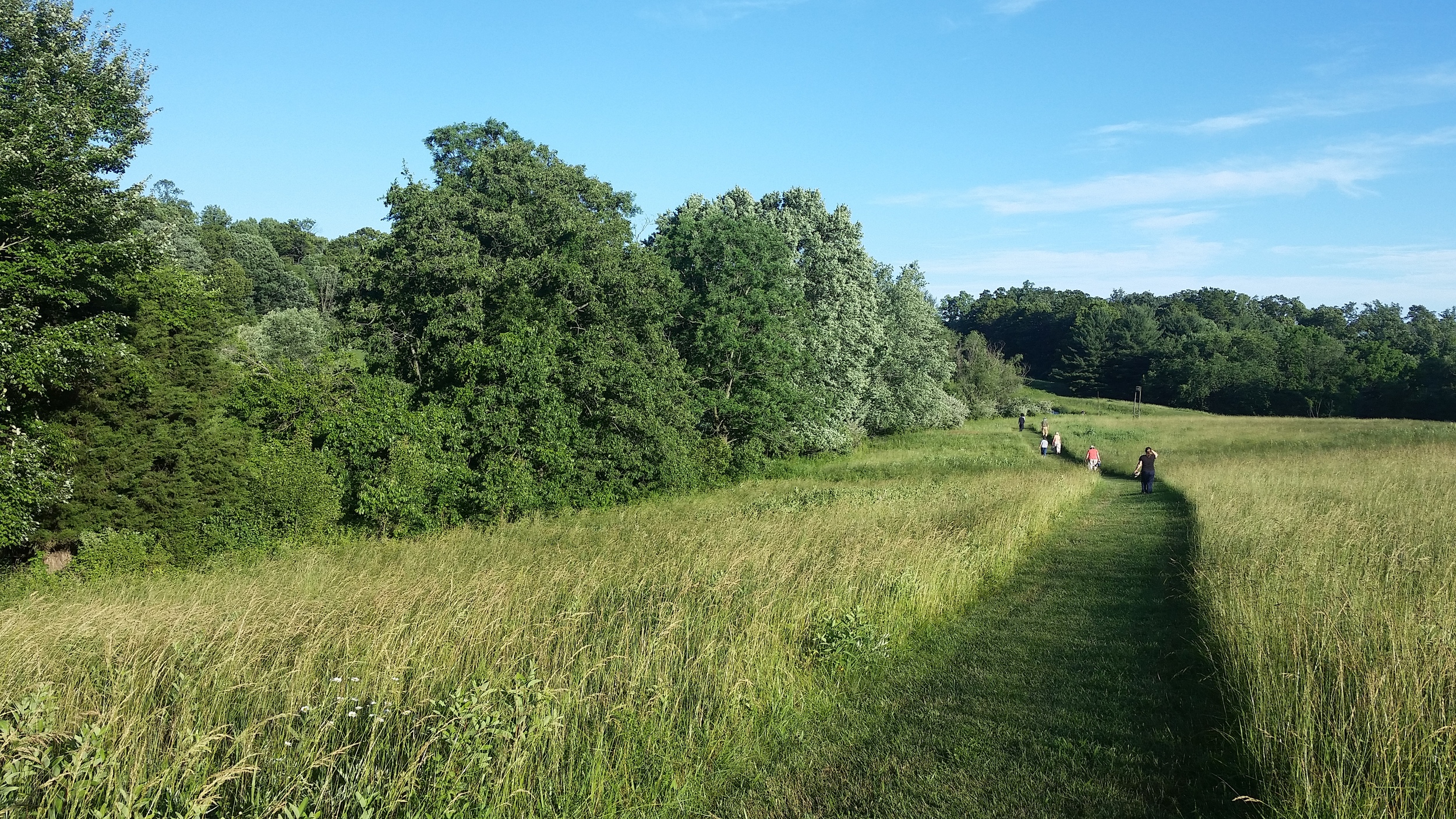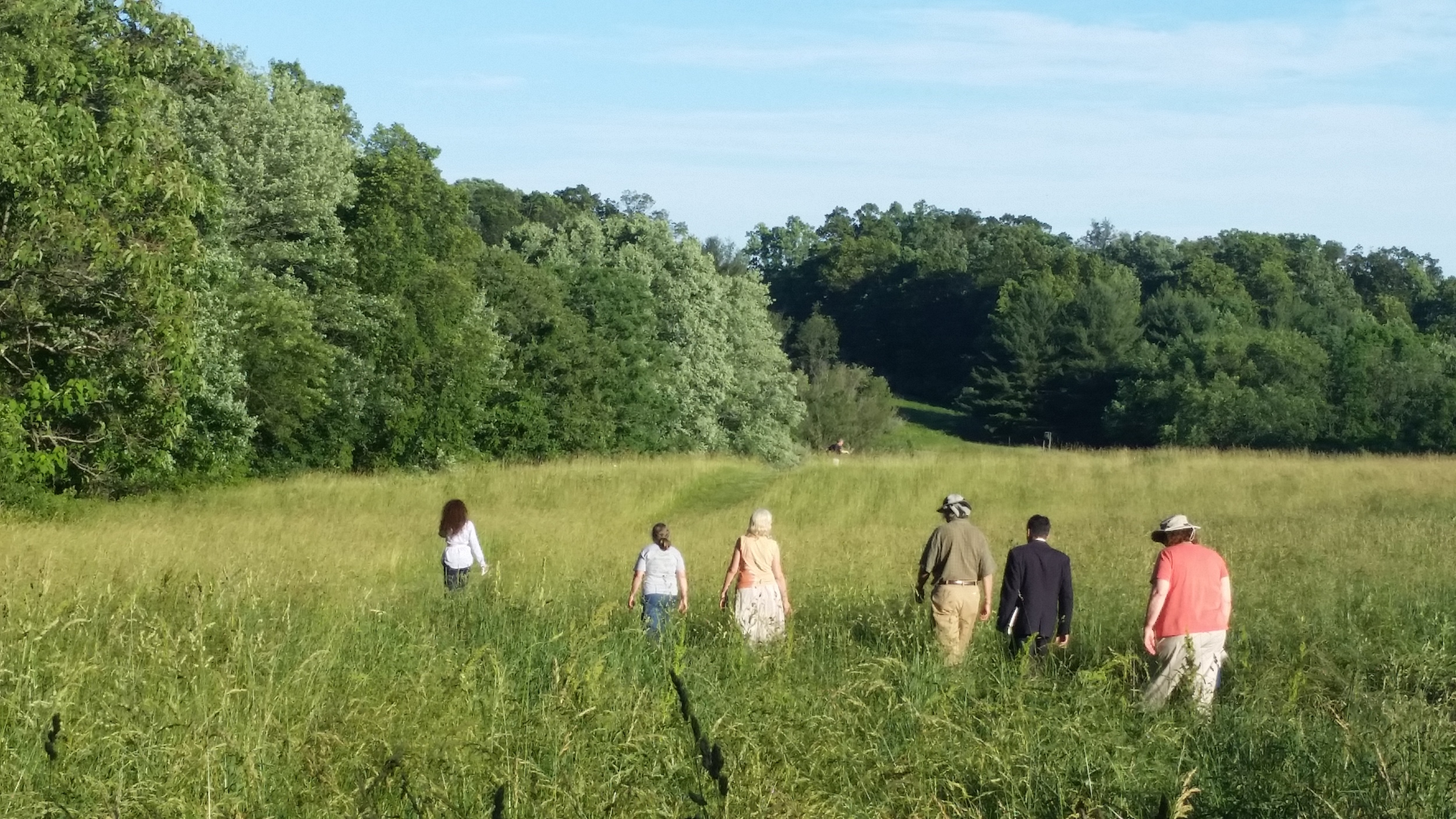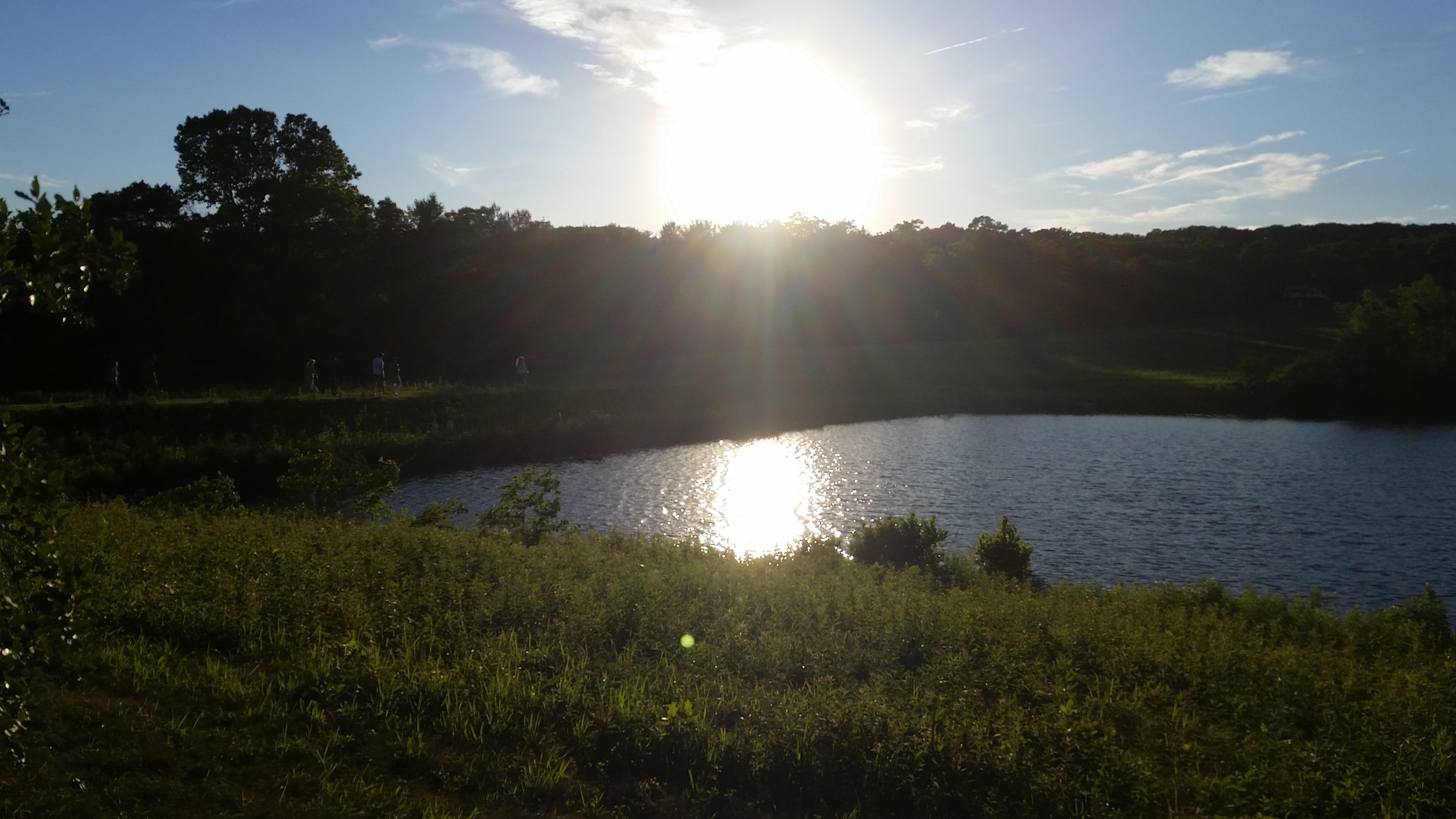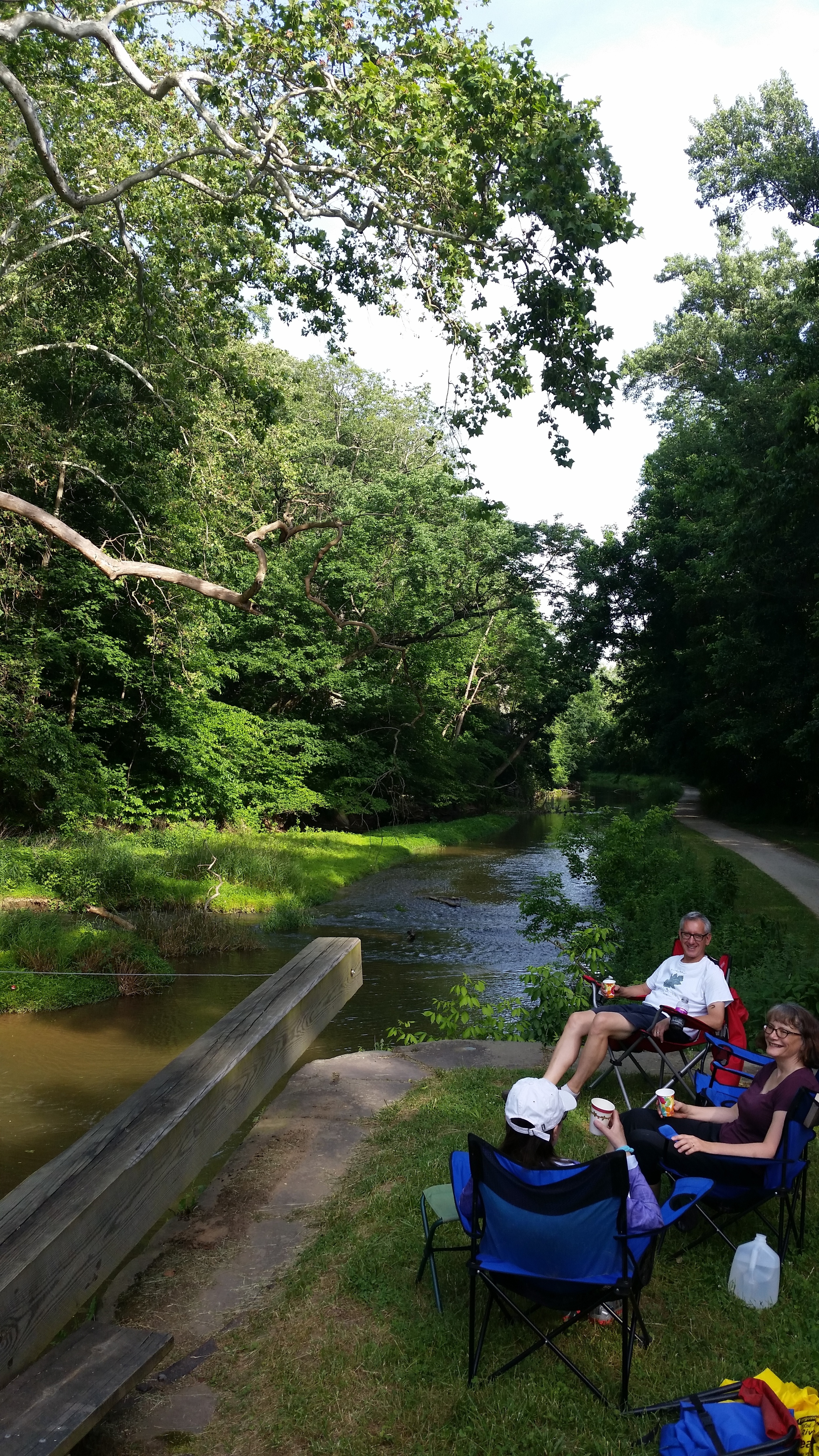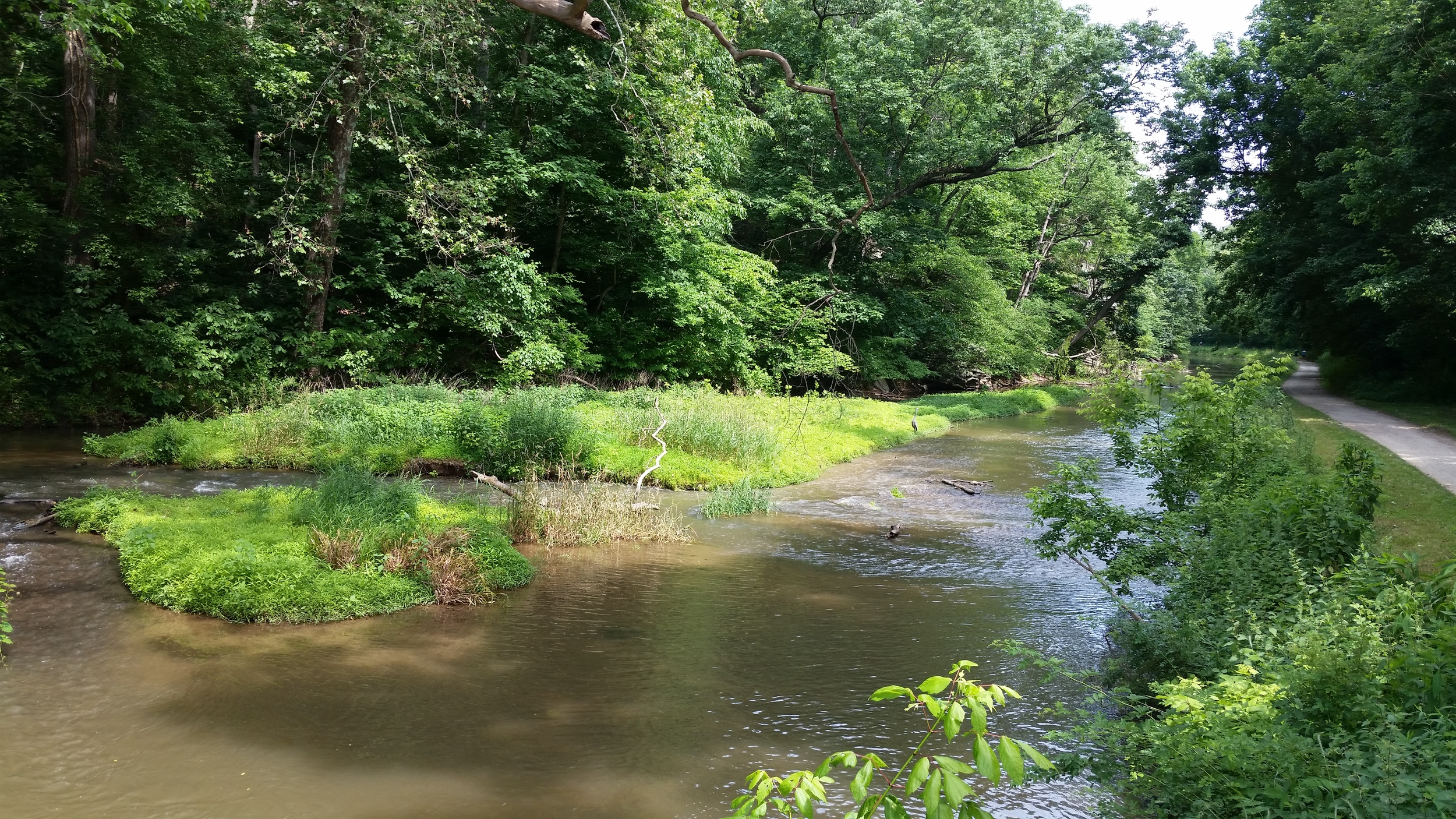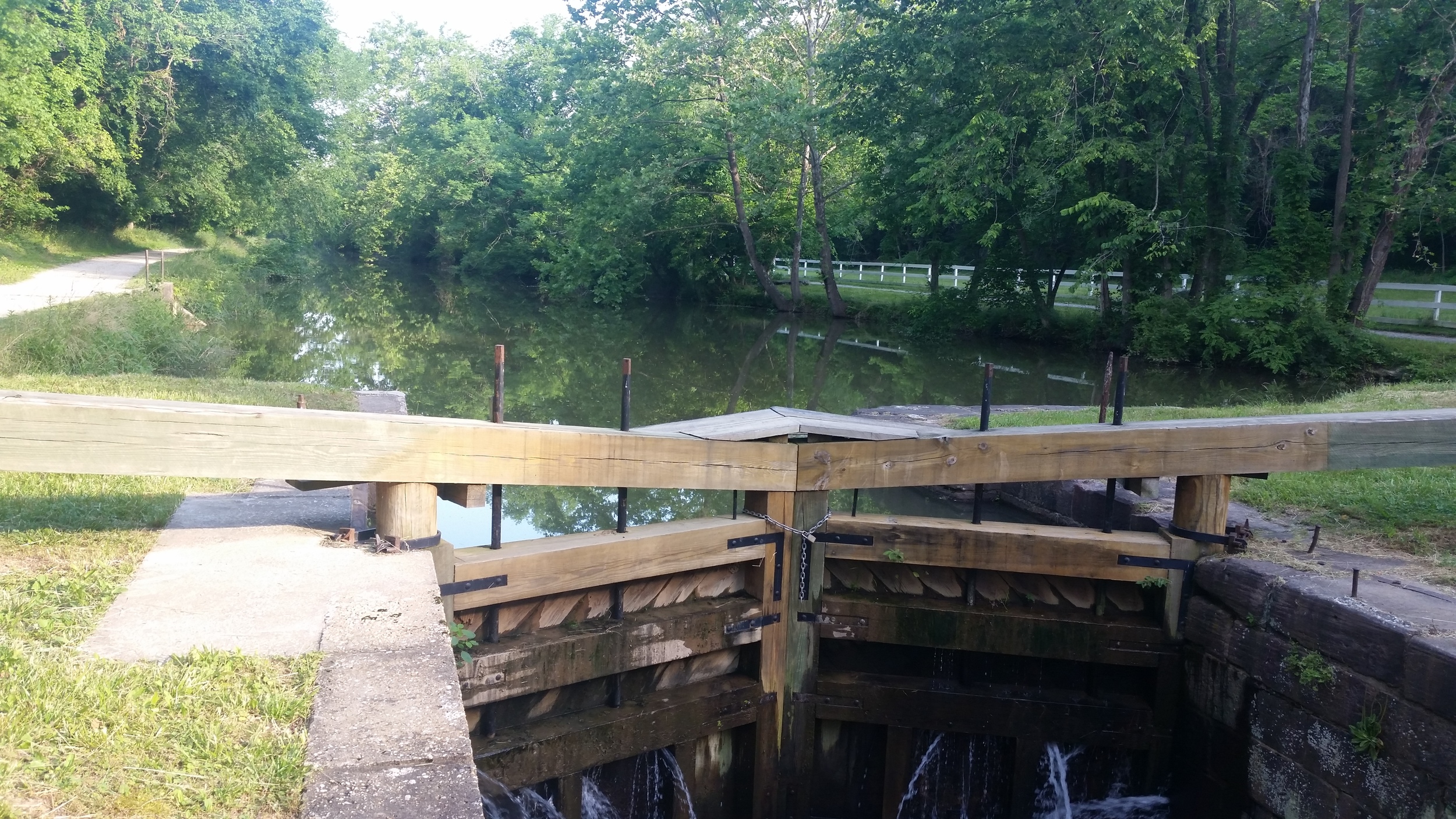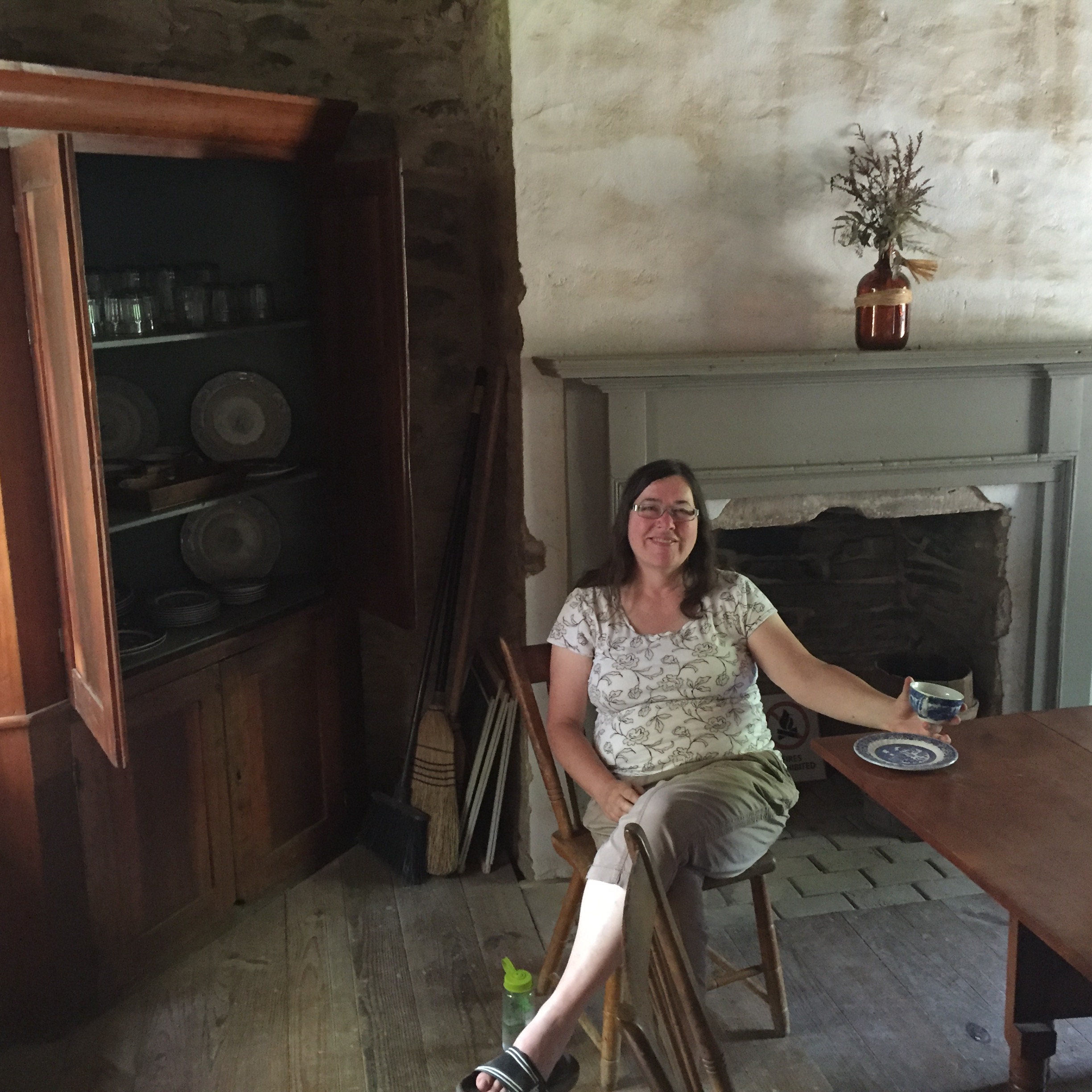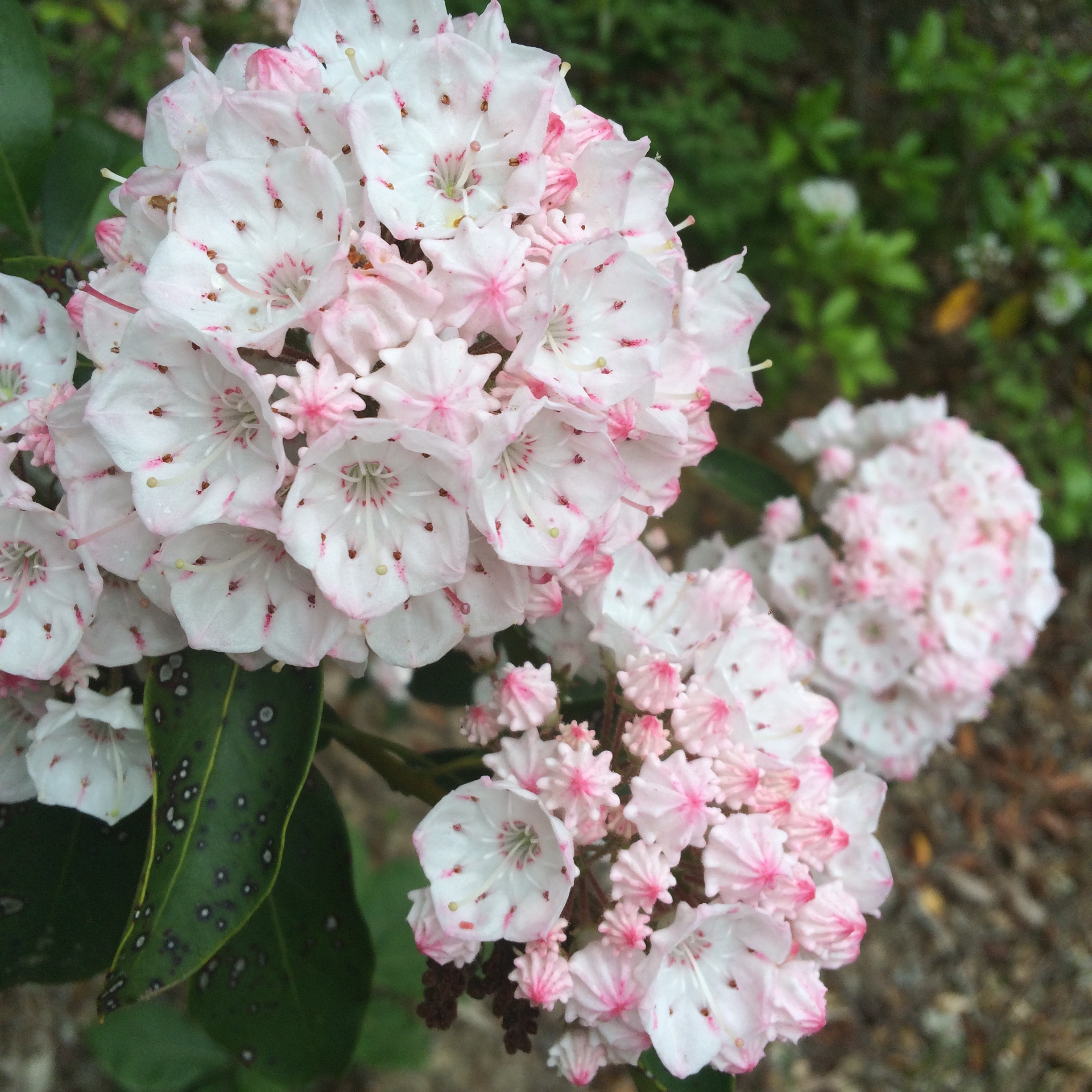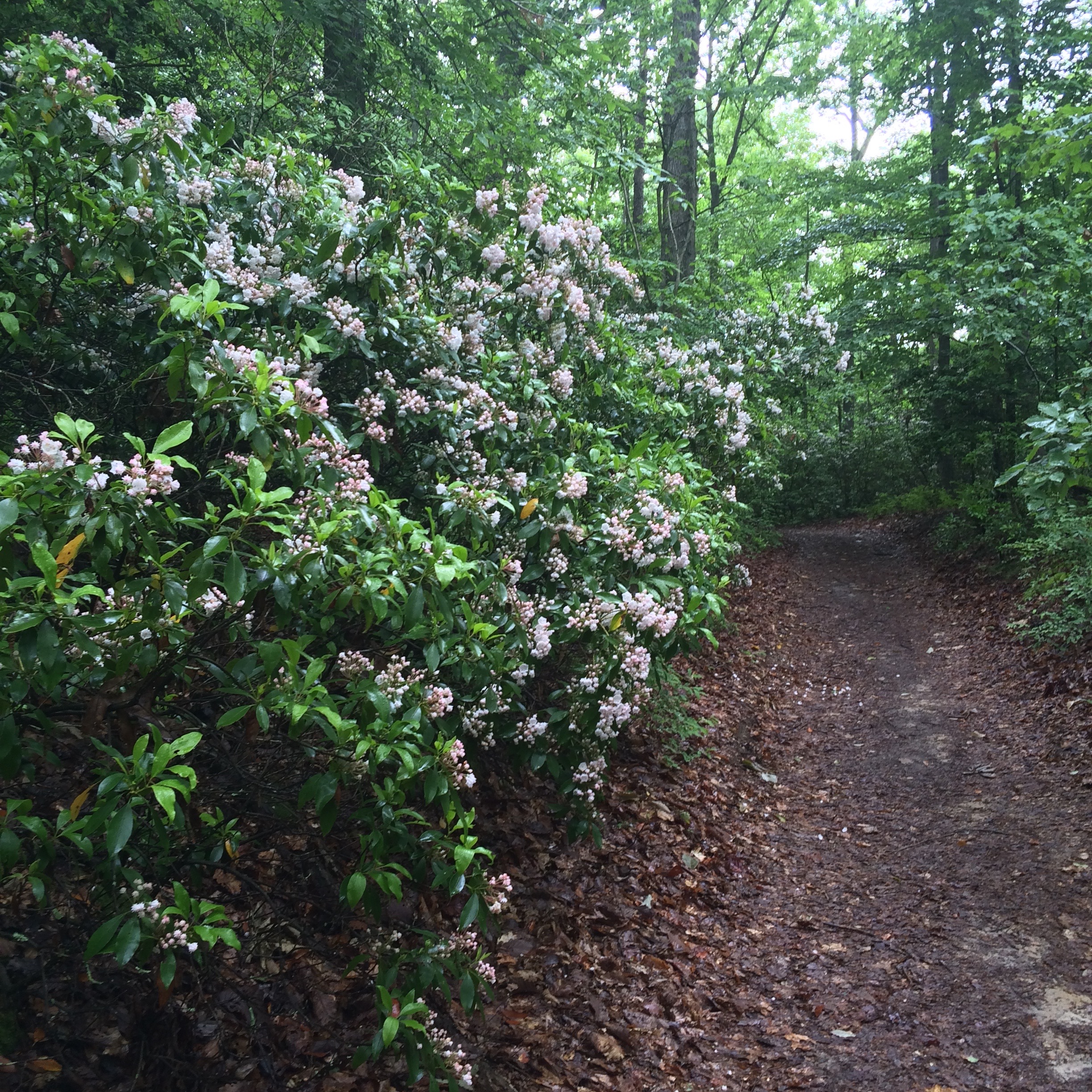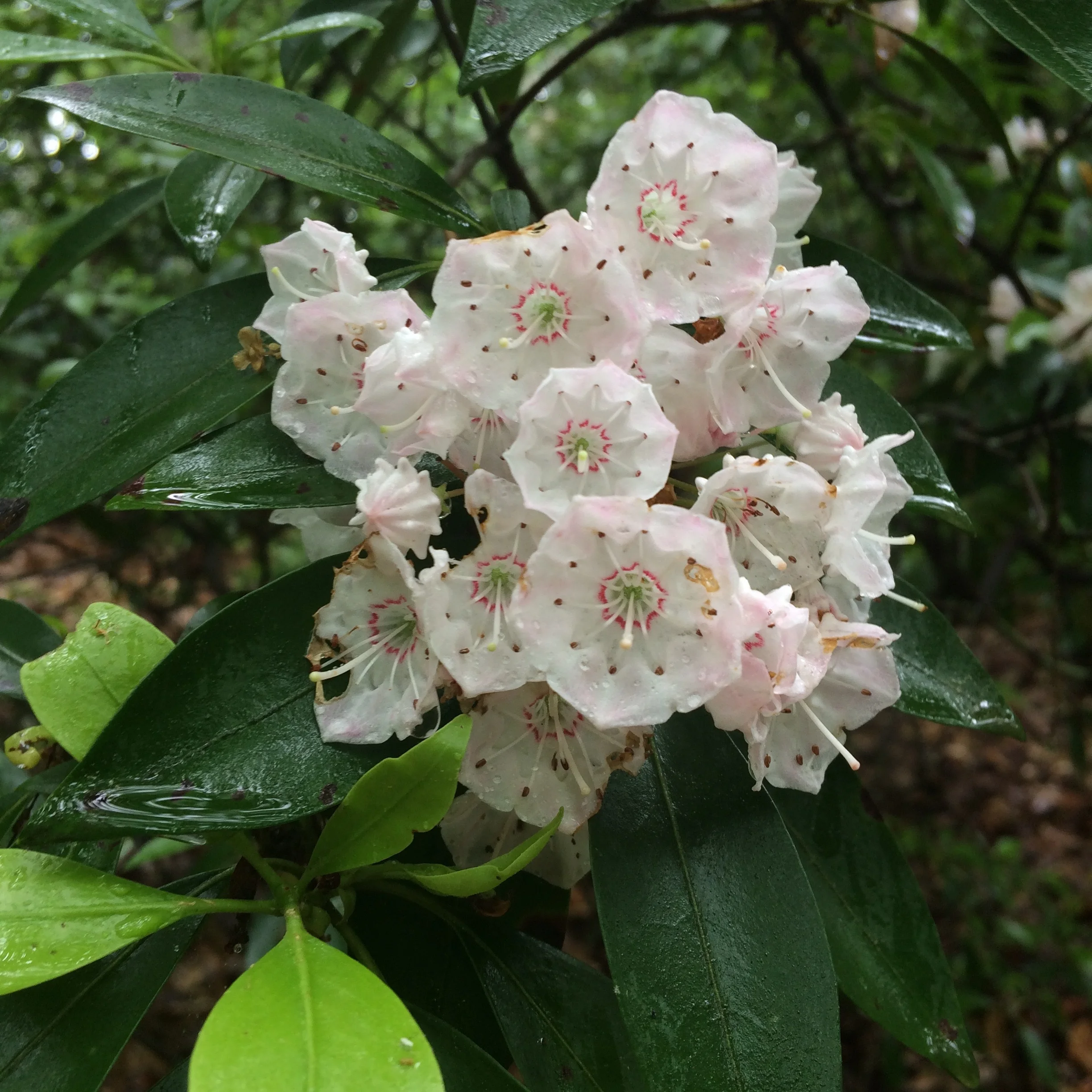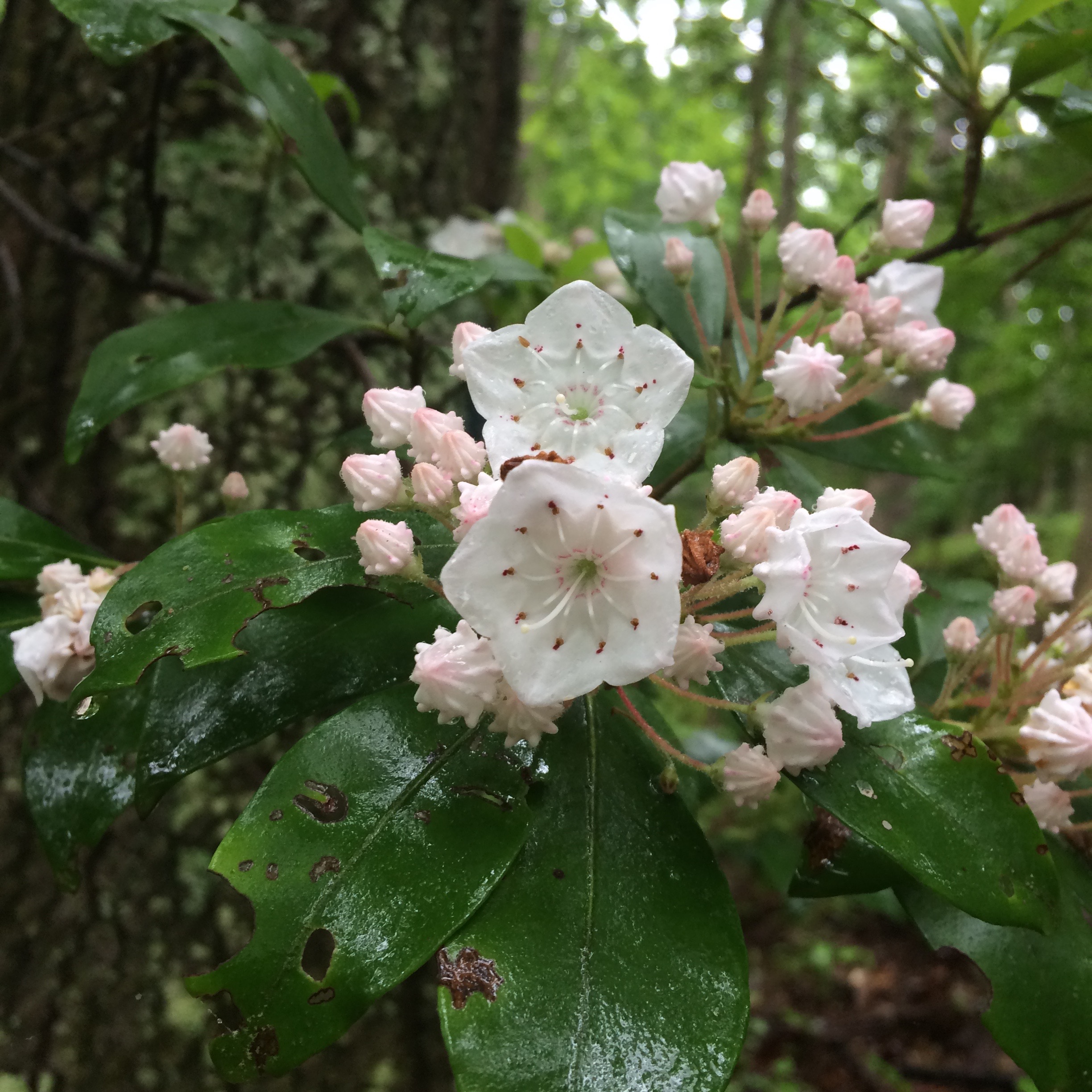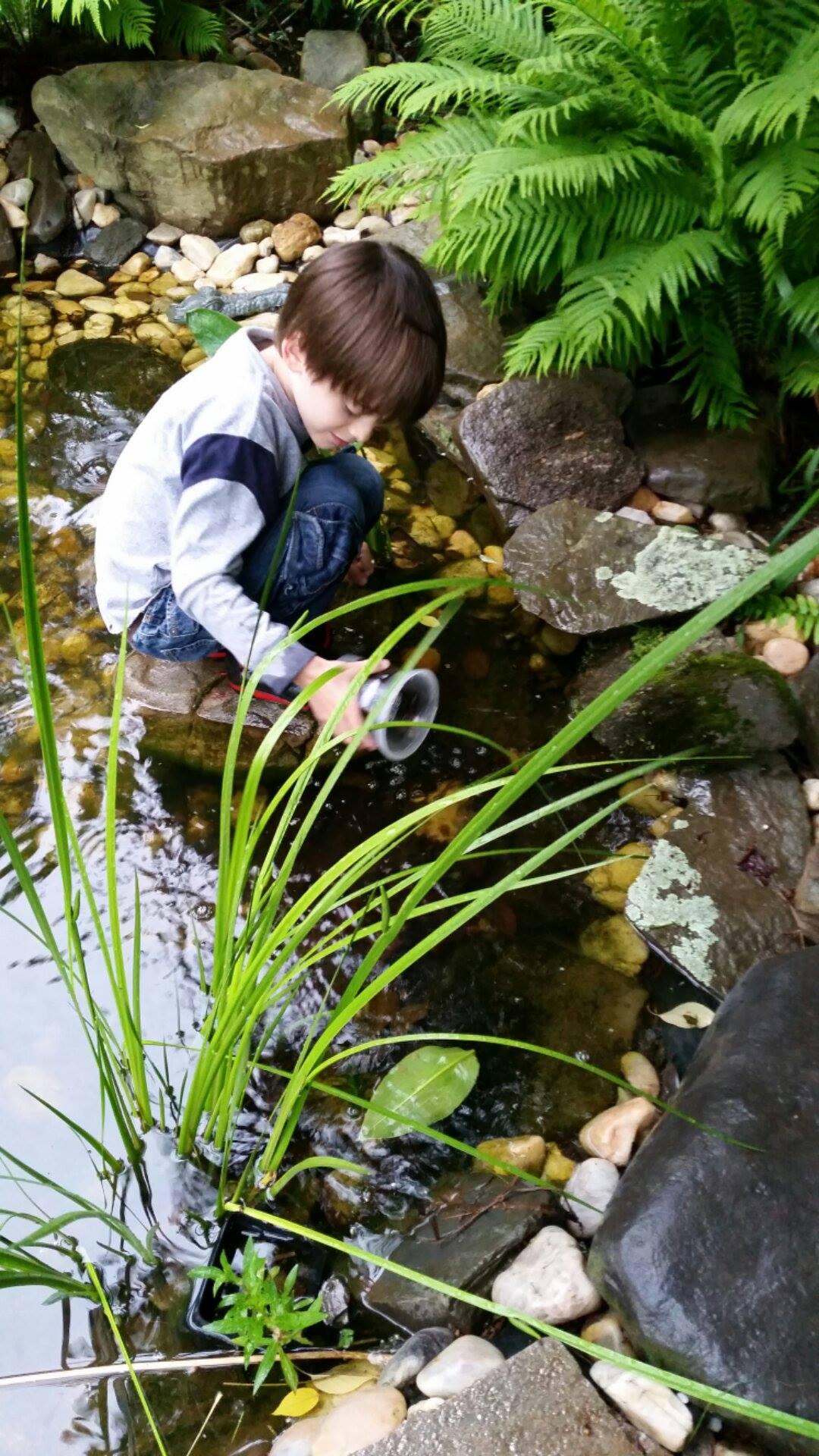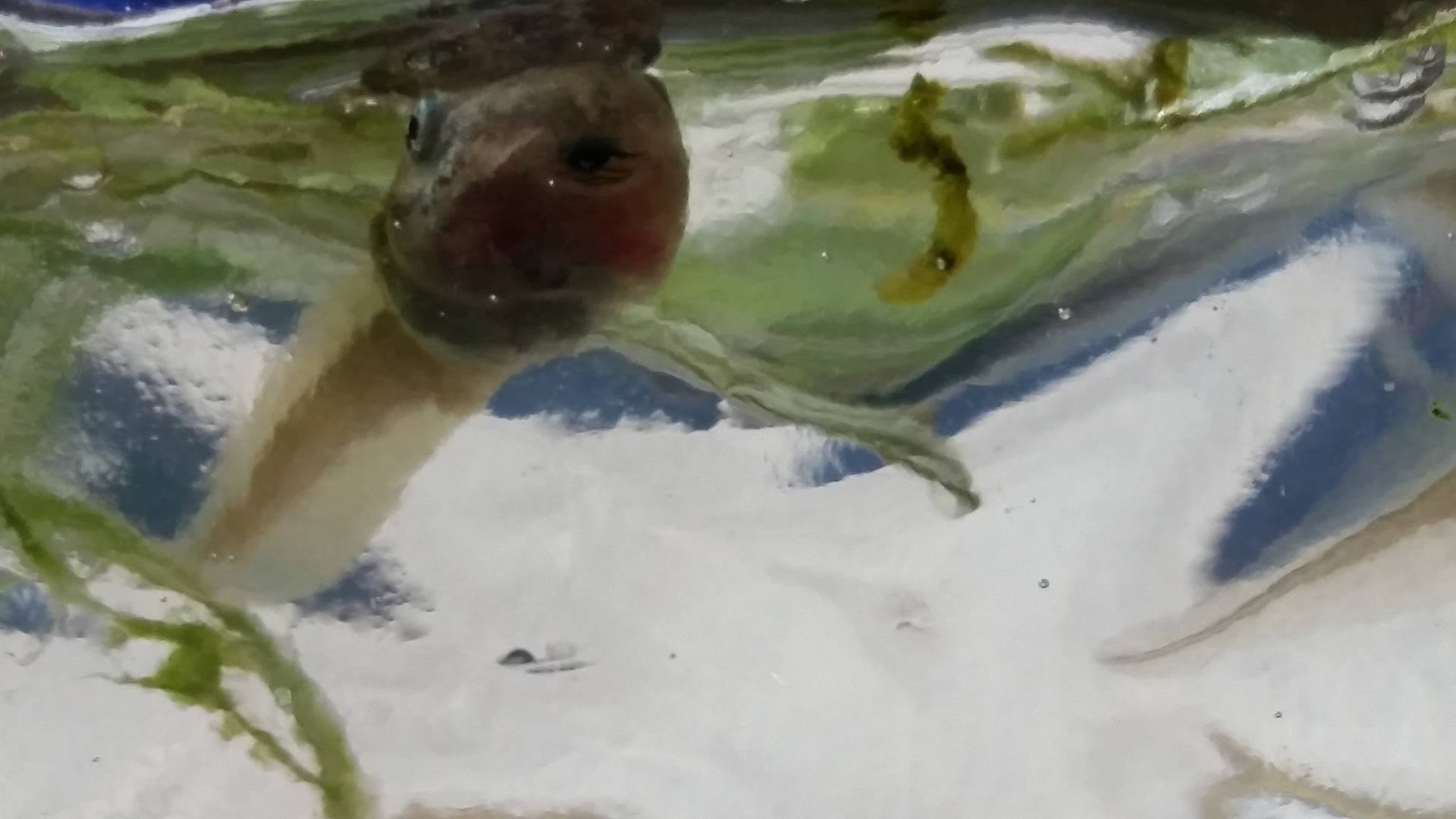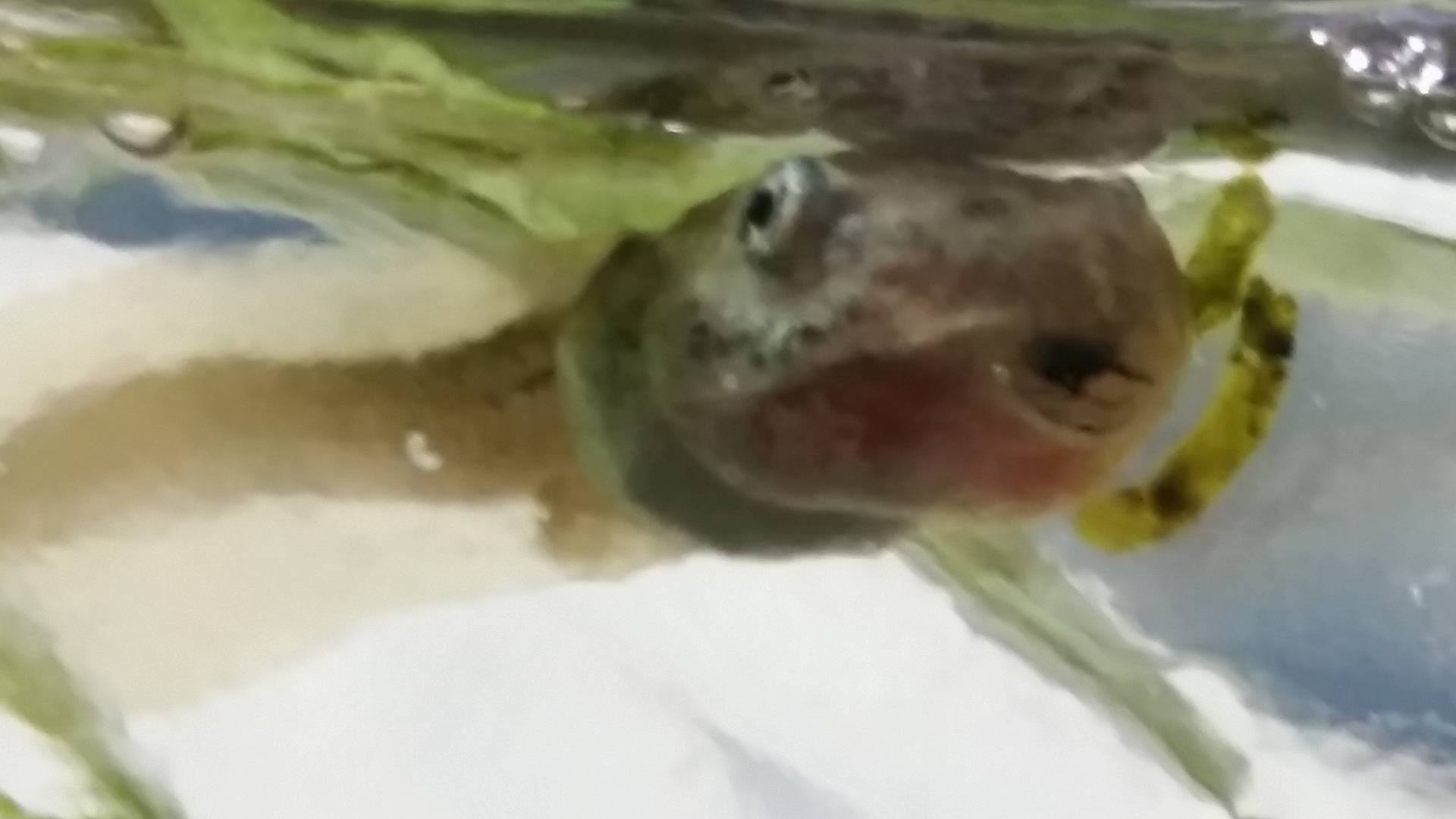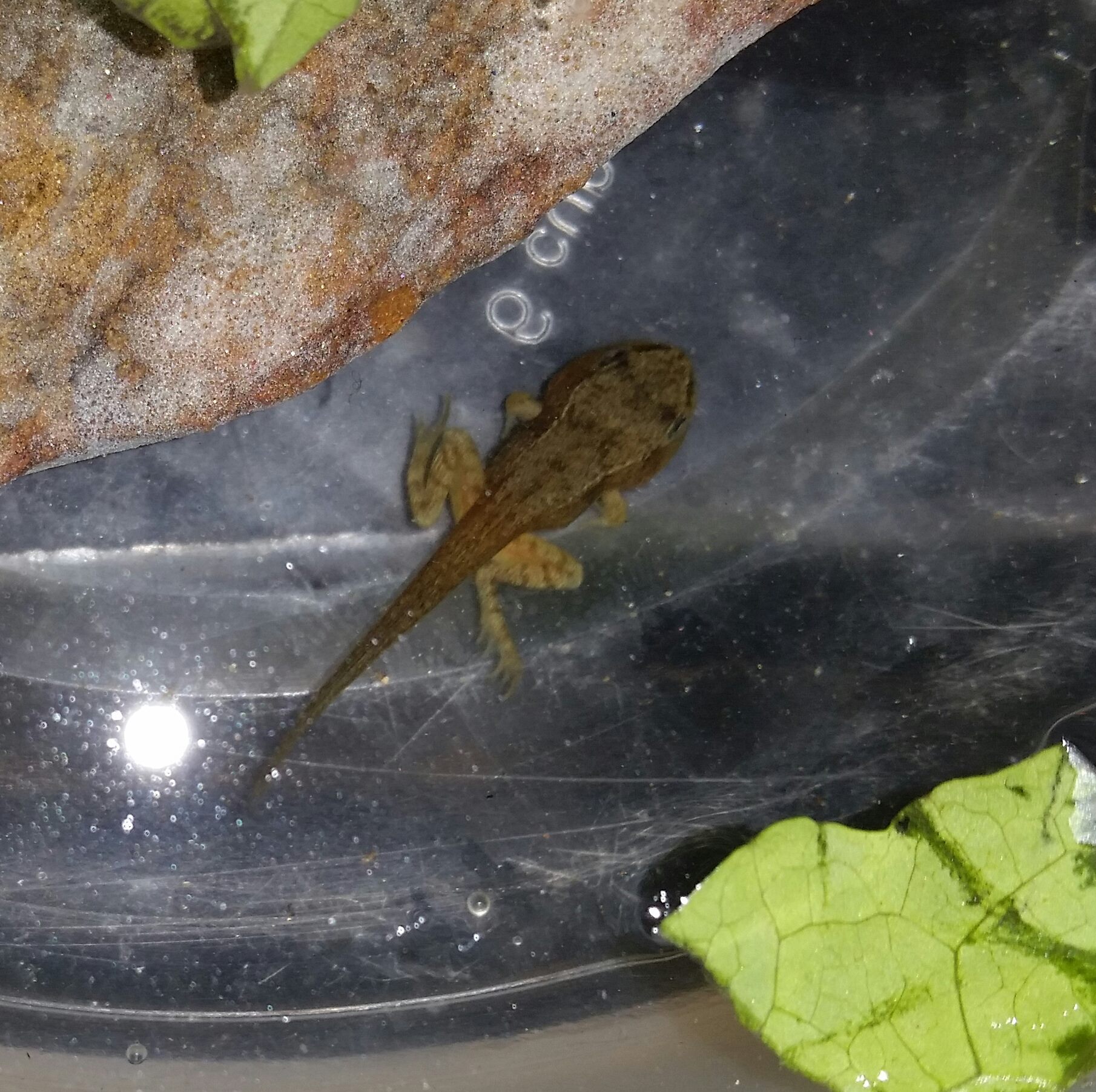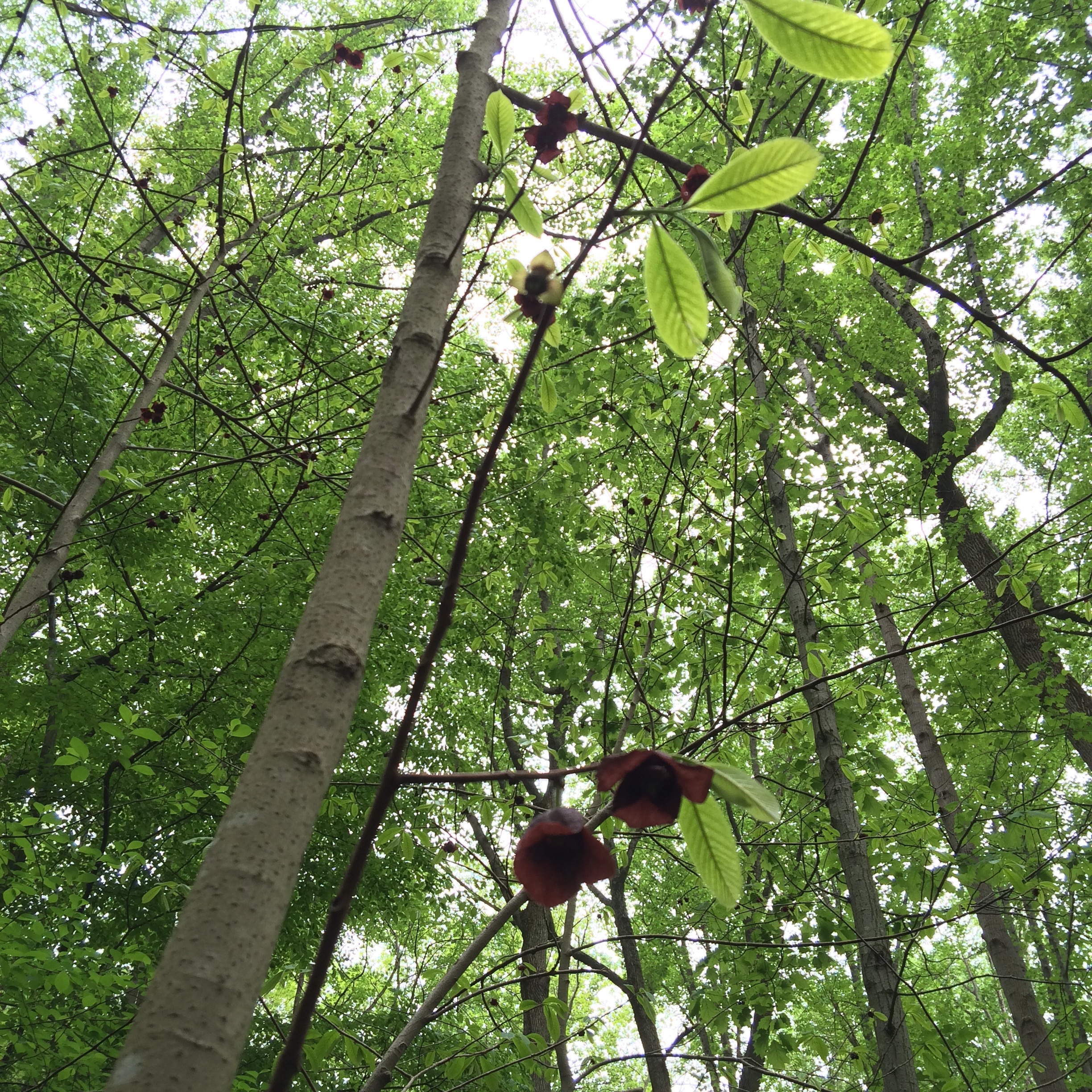Photo taken about 2 PM after flowers have dissolved for the day.
Tradescantia virginiana is native to our area. Its flowers are blue, purple, or white. Most of the spiderworts sold in nurseries are Tradescantia virginiana or hybrids. There are 75 species of Tradescantia found from Canada to northern Argentina.
Tradescantia virginiana is a perennial. It likes most moist soils but can adapt to drier garden soils. It's described as growing in sun to shade -- in my experience they prefer some shade. Morning sun is ideal as the flowers bloom in the morning then dissolve; each flower lasts just one morning. In our area they bloom from spring through early summer. More rain means more blooms -- it's been a good year for this plant. Plants may be propagated from seed but they are more easily started from cuttings or divisions. In my garden they are deer resistant.
Spiderworts are so named because the angular leaf arrangement suggests a squatting spider. The genus is named after John Tradescant (1608-1662) who served as gardener to Charles 1 of England. (info from Wikipedia and www.wildflowercenter.org.)





